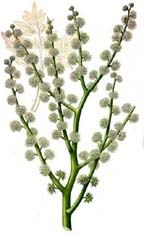

Ammoniacum (Dorema ammoniacum)
Folk Names: False Sambul, Gum Ammoniac
Description: Ammoniacum is a resinous tree extending from Persia to southern Siberia. This tree grows up to seven feet tall. In the spring and early summer, it contains a milky white juice. This is a favorite of beetles, which puncture the flowering and fruiting stems, releasing the tree’s sap. Most of this falls to the ground, where it becomes mixed with soil and rocks (the source of most impurities found in collections). The rest dries in the crevices of the stem to form gum.
Effects:
Planet: Jupiter
Element:
Associated Deities: Jupiter, Ammon
Traditions:
Ammoniacum is grown near the ancient temple to Jupiter Ammon in the oasis of Siwa in the Libyan Desert where it has been gathered since ancient times. Ammoniacum has been used as incense for religious ceremonies to invoke Jupiter Ammon since times immemorial. It is from this deity, that Ammoniacum is said to have taken its name. Jupiter Ammon is a form of Amon, featured last week as the Who’s Who in World Mythology. Lysander, Hannibal, and Alexander the Great were all said to have visited his temple for guidance. Shortly after his visit to the temple of Jupiter Ammon during which he was called the son of Amen, Alexander the great was crowned king of Egypt. Mohammedans also use Ammoniacum as a religious incense.
Magic:
In addition to being used to invoke Jupiter Ammon, ammoniacum may be used in rituals to increase resources.
The root of ammoniacum is referred to as False Sambul and may be used in its places.
Known Combinations:
none noted
Medical Indications: Parts Used : gum resin tears
Taken internally, ammoniacum is an expectorant valued in the treatment of chronic bronchitis, especially in the elderly. It also has a mild diuretic action. Externally it is applied as a plaster to white swellings of the joints and indolent tumors.
Nutrition:
none noted
Mercantile Uses:
The gum resin in tear form is exported mainly to England for its medicinal value.